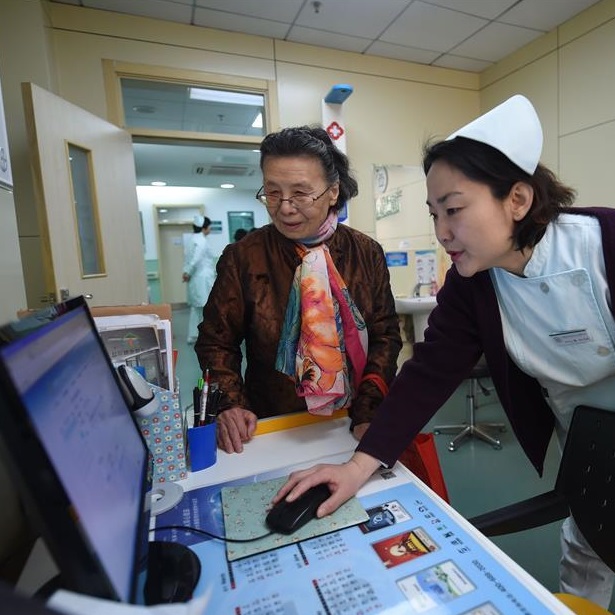The opportunities in China Medical Reform
The healthcare ecosystem in China is complicated but full of potential. Medical Reform will reshuffle the elements in the healthcare chains and create new systems which are appropriate for a modern China.

The healthcare ecosystem in China is complicated but full of potential. Medical Reform will reshuffle the elements in the healthcare chains and create new systems which are appropriate for a modern China.

by Diana Yuan, AMBA ’17
China’s medical system contributes significantly to improving people’s health, especially for those with limited resources. The system has been so effective, that it has managed to increase the longevity of the population from 40 to 75 after World War ?. As the population is aging and the economy develops, the traditional medical system that used to be effective in the past is now facing many challenges. Medical expense deficit, uneven medical development among regions, and unqualified medical resources are some of the problems the government is facing in the health sector.
Although they have implemented many policies to improve the system’s performance, there is no clear direction or frame work for medical reform. Because of the uncertainty, all the stakeholders in the healthcare industry chain such as the manufacturers, hospitals and vendors, struggle to adapt to the continuous changes. However, forecasting the trend and catching the opportunities in this ambiguity will help them gain the upper hand.
Medical Service
Since the introduction of reform and opening up, the Chinese economy developed very fast and the Chinese people accumulated a large amount of wealth. The middle-class increased to 200 million people by 2015, owning a total of 28.3 trillion dollars. The high-net-wealth population in China, which owns more than 1 million dollars per home, was made up by 15 million people by 2015. Although different, both of these social classes care about their health situation and have higher quality requirements for medical services.
Most of the hospitals in China are owned by the government and the best doctors are working in these government owned hospitals. On the other side, the private hospitals do not have a good reputation because of their higher prices, the unstandardized medical services and the high number of medical accidents. The government owned hospitals are always crowded with waiting patients, and the doctors and nurses are struggling to attend to the many patients. Even though some patients would like to pay more for a better medical service with more chances to communicate with their doctors or better hospital facilities, they don’t have many choices.
Some international medical service providers, such as United Family Hospital, Gleneagles Hospital, among others, have entered the Chinese market. However, the pool is still too small to provide enough high quality and customized medical service to satisfy the increasing demand. Multiple ways of cooperation between China’s local medical organizations and international healthcare organizations have taken place. For example, at the end of 2015, Evergrande Group’s healthcare department signed a cooperation contract with Brigham and the Women’s Hospital of Harvard University to create new healthcare centers.
Besides building more premium hospitals in China, the business of overseas healthcare agents will develop quickly. Together with tourism, overseas healthcare programs could provide specific and superior treatments depending on the country’s different specialties. For example: Korea is good at plastic surgeries; U.S.’s IVF and post-cancer treatment are the best in world; Japan’s early tumor testing is the most sensitive, etc.
Medical manufacture
In 2016, China imported medical devices at 18.4 billion dollars (a 1.1% increase), and exported 20.5 billion dollars (a 3.14% decrease). The import speed of medical devices has slowed down. From the government’s new policies on medical devices, Chinese medical companies are supported and develop fast. Many provinces enact the policy that hospitals must purchase Chinese brand medical devices. If a hospital wants to buy imported medical devices, it must provide the experts’ report that explains the necessity and irreplaceability of the imported devices.
International medical manufacturers are affected by the political control and need to deal with public relationships carefully. Meanwhile, they are facing fierce competition from the Chinese manufacturers as the technology gap has been reduced. The international manufacturers would hedge the risk by localizing production and maintaining its superiority with technological innovations. The national Chinese manufacturers will have their golden years to expand market and build its brand. Quality, efficiency and scientific management will be the key factors for the success of the national manufacturers.
Digital Revolution in Healthcare
The digital revolution has changed most of the industries, including finance, advertising, social media…and healthcare is not an exception. Although digitalized healthcare develops at its own pace, it is slower than the other industries. It takes a significant amount of capital to apply the digital technology into the healthcare industry, and time for doctors and nurses to adapt to the new theories and work models. Thanks to many efforts in the past ten years, the digital revolution is expected to bring the healthcare system a breakthrough in the near future.
Communication technology allow the remote diagnosis and surgery coaching to come true, helping to solve the uneven medical development in different regions and expanding the effectiveness of healthcare staff. Meanwhile, this application would reduce the medical cost significantly without medical service degradation.
Mentioned in China’s 13th government five-year plan, the national big data strategy will leverage the resources to facilitate data collection, storage, analysis and application. The big database will help the doctors to trace the patients’ prognosis, optimize clinic processes and summarize academic principles to promote medical development. Along with big data, medical artificial intelligence will play a more and more important role in healthcare ecosystem every day.
Besides the points mentioned above, there are many other hot spots that attract great attention for investors, such as the e-commerce of medicine and medical devices. The healthcare ecosystem in China is complicated but full of potential. Medical Reform will reshuffle the elements in the healthcare chains and create new systems which are appropriate for a modern China. Considering the gaps that the government is facing, it is important to identify and catch the opportunities for the future.
